It is best to use garden herbs when they are fresh but you can use them more than one season. That is why learning how to dry and store herbs is essential. Air drying is not the only effective and least expensive way to dry out fresh herbs but this slow drying process also helps retain the essential oils of the herbs which is required for maintaining their flavor.
This process works best with herbs that do not have high moisture content, like bay, dill, angelica, oregano, and thyme. If you want to retain the best flavor of these herbs, you will either have to allow them to dry naturally or use a food dehydrator. If you’re looking for a shortcut, a microwave or an oven set on low may work but they cook the herbs to some degree. That way, the oil content and flavor diminish. So, we recommend you use these appliances as a last option only.
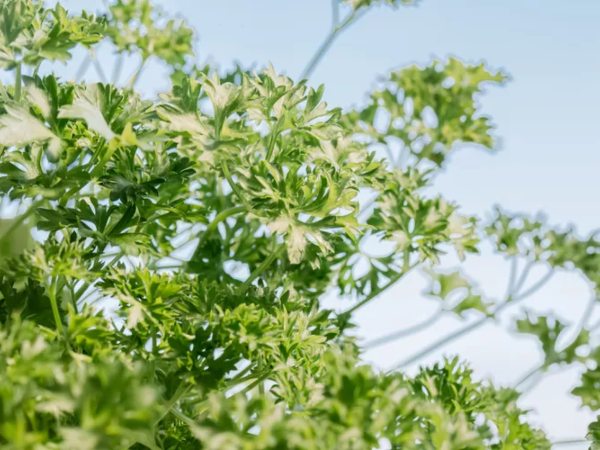
Preserving herbs with succulent leaves or a high moisture content like basil, chives or mint, and tarragon, can be done by drying them with a dehydrator. However, for the best flavor retention, try freezing them which is much easier and quicker than drying.
When to harvest garden herbs for drying
- Harvest garden herbs before they flower for the fullest flavor: If you have been harvesting garden herb branches every season, that might lead to your plants never getting a chance to flower. But, by late summer, even the herbs yet to flower will start declining as the weather gets cooler. This is the right time to start harvesting and drying your herbs.
- Cut branches in midmorning: Allow the morning dew to dry from the leaves but pick them before the afternoon sun wilts the plant.
- Do not cut the entire plant, unless you plan on replacing it: You should not cut back more than 2/3 or remove more than about 1/3 of a plant’s branches at once.
Once you dry and store these herbs in an airtight container, they will retain good flavor for up to a year.
Also, Read 10 vegetables that grow well in raised beds
How to dry fresh herbs
What you will need
Tools Materials
- Pruners or garden scissors Paper bag
- Airtight containers Container labels
- String or rubber bands Paper towels
-
Gather clippings
Firstly, gather the clippings of the herbs you wish to dry.
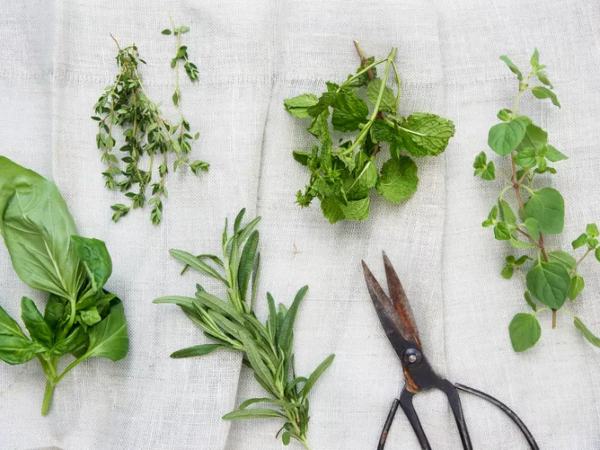
2. Shake the branches
Shake the branches gently to remove any insects attached to the clippings. There might be hitchhikers and since you will not wash the stems thoroughly, remove as many as you can now.
3. Ensure the herbs are dry
If you pick your herbs while the plants are dry, you should be able to remove the excess soil. If necessary, rinse off with cool water and pat dry with paper towels. You can either hang or lay the herb branches out where they will receive enough air circulation, drying them quicker. Wet herbs will mold and ultimately rot.
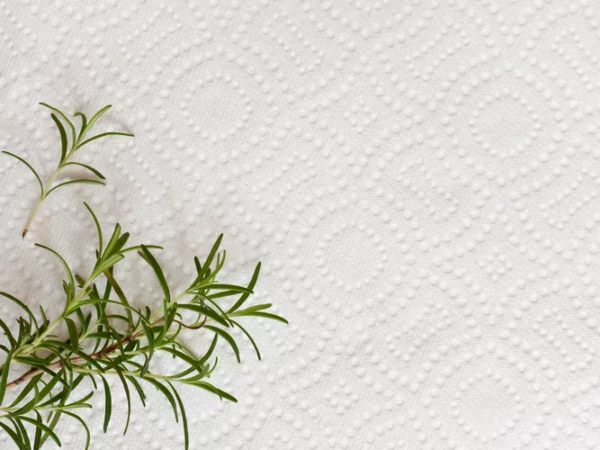
4. Get rid of the lower leaves
Remember to remove the lower leaves along the bottom inch of the stem. The good news, you can use these leaves fresh or dry them separately. Remove any dry or unhealthy leaves from the herbs during this time. It is useless to dry any yellowed or diseased leaves as their flavor has already been gone by the stress.
5. Bundle the stems together
Make a bundle of four to six stems together and tie them as a bunch. After some time, the bundles will dry and shrink and the string will loosen so it is essential to check from time to time that the bundle is not slipping. If you are drying herbs with high water content, make small bundles so they get enough air circulation between the branches and do not rot.
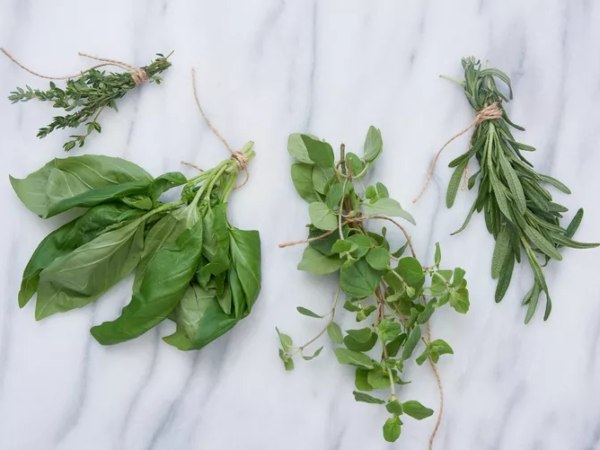
6. Add the herns to paper bags
This is optional. Some say that paper bags help in drying out herbs quickly and thoroughly. Make holes in a paper bag and keep the bundled herbs inside, upside down. Secure the bag by gathering the end around the bundle and trying it closed. Do not crowd the herbs inside the bag. For no confusion, label the bag with the name of the herb that you’re drying.
7. Hang the herbs upside down
The most traditional way to dry herbs is to take a bunch, hang it upside down in a warm, airy room, and let nature do the rest.
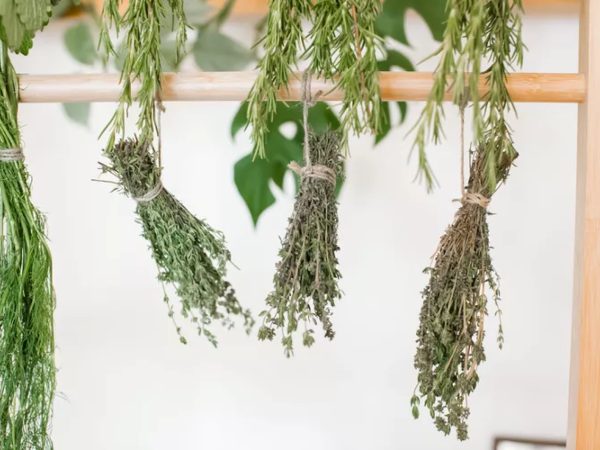
How to Store Herbs
Once the drying process is over:
-
Discard any moldy herbs
Let go of any dried herbs that show the smallest sign of mold because it will only spread.
2. Store herbs in an airtight container
Store your herbs in an airtight container. Small canning jars work perfectly. You can also use zippered plastic bags as an alternative. Storing the leaves whole and crushing them when you are ready to use them will retain more flavor. When it’s done, label and date the containers so you’ll know which one it is.
3. Place containers in a cool, dry spot
Keep the containers away from the direct sunlight, in a cool, dry place. You can choose amber-colored canning jars that are designed to block sunlight.
Tips for Using Dried Garden Herbs
You can start using your herbs in various recipes once the drying and storage process is finished:
- When you want to use the herbs for cooking, just pull out a stem and crumble the leaves into the pot.
- Use about a tablespoon of dried and crumbled leaves in place of 1 tablespoon of fresh herbs.
- Dried herbs are best used within a year. Know that as your herbs lose their color, they are also losing their flavor as well.
3 Garden Herbs That Grow Indoors All Year
Now that you know how to dry and store your garden herbs, here are some herbs that will grow inside your house all year:
-
Basil
Whether you want to make pesto or a tomato-based sauce, many gardeners who like making Italian food think basil is a necessity. This annual also has ornamental features. Some types have a deep purple foliage color and/or leaves that are ruffly. When the basil reaches 6 inches, start pinching it often to keep it from blooming, and start using it in the kitchen.
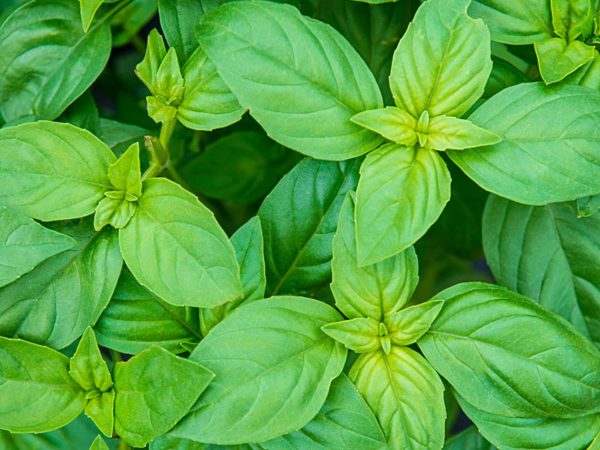
2. Catnip
Do not forget the requirements of the family cat when keeping one in your herb garden at home. This perennial grows like a weed outdoors and is also easy to grow indoors. Once it reaches some height, pinch it early to prevent flowering.
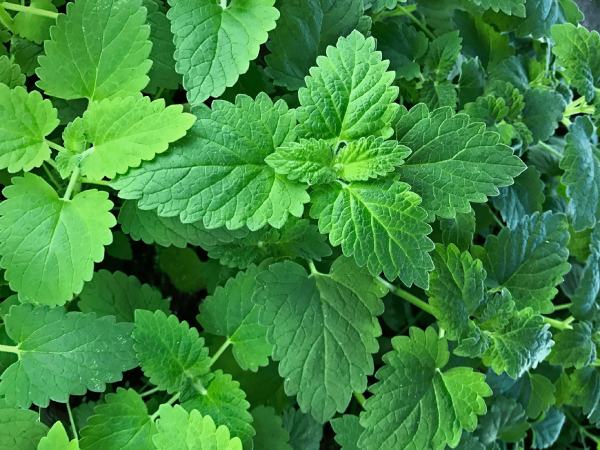
3. Chives
This purple easy-growing perennial has a light onion taste as it is related to the vegetable. Its grass-like leaves are used in soups and salads. It also has one of the more attractive flowers among the culinary herbs.
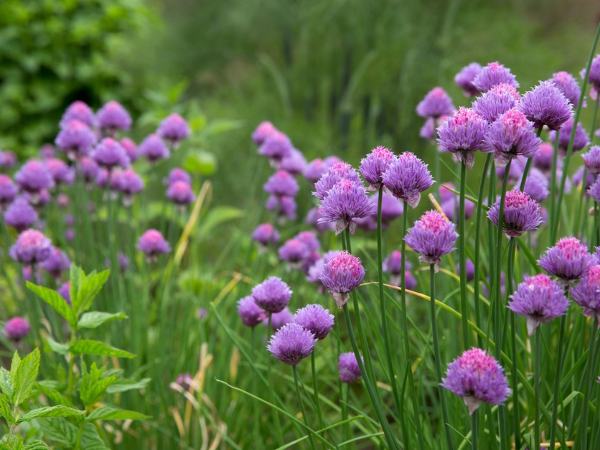
FAQs
Q: Are there any herbs that you should not dry?
A: While many herbs can be dried and used later, there are some herbs with lower volatile oils, such as parsley, tarragon, and chives, that have stronger flavor profiles when used fresh. These delicate herbs will lose more of their flavor and have a shorter shelf life when dried.
Q: Should you dehydrate or air-dry herbs?
A: Dehydrating vs. air drying your herbs depends on the moisture content. For herbs with more moisture content, like basil, it’s best to dehydrate. For herbs without much moisture, you can easily air dry. Herbs with large, fleshy leaves, like sage, will take longer to air dry.
Q: How long will dried herbs last?
A: You can expect your dried herbs to last for 1 to 3 years with proper storage.
Also, Read What Is a Perennial? How to Choose and Care for Perennial Plants!
